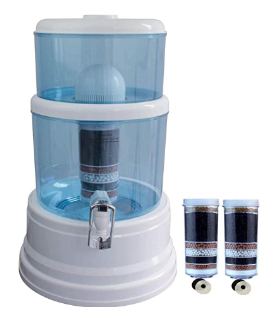People who do not own any filtering systems in their homes find that water tastes bad while at the same time not good for health.
In this era, when everyone is more conscious about what they ingest, our drinking water still receives little thought.
Surprisingly, the contaminants found in drinking water can cause serious health problems.
While people make an effort to treat their water using filtering units, most of these still leave traces of unhealthy toxins.
The reverse osmosis system is a common filtering process that removes water impurities, making it potable.
Here is a list of three reasons why you need to consider this filtering unit at your home.
Gives Water A Better Taste
In a society where pollution is the order of the day, there is nothing like clean, raw drinking water.
Using filtering systems to remove harmful molecules aids in the creation of better-tasting water.
Contaminants always interfere with the taste of drinking water.
Depending on the region that one lives in, different water systems have specific elements.
In the mid-Western region, for instance, groundwater in residential areas is prone to Sulphur contaminants.
It is probably not a surprise that our drinking water has a lot of contaminants.
The levels are usually deemed as harmless, but over time may cause harm to the body.
While the traces won’t make you sick, they will definitely leave a bad taste to put up with.
One of the reasons why you need to use a reverse osmosis system is that they can help to get rid of water impurities, thereby improving the taste of water.
By removing all contaminants, the water will taste refreshing and clean. Learn More about the Aimex Aust16 litre Water Purifier

Get Rid Of Pollutants
One of the main goals of a reverse osmosis filter is to remove impurities, toxins, and other water particles.
Apart from improving the taste of water, this filtration system removes harmful bacteria and chemical pollutants.
Reverse osmosis filters contain a membrane layer, which attracts all the particles in water through different channels.
Water can contain different pollutants, including harmful chemicals and organic particles, which may not be noticeable when the water is clear.
However, most pollutants create cloudiness in the water, and the more pollutants exist in the water, the more turbid it will appear.
Unfortunately, even in the cases where the water tastes fine and look clear, there are high chances that it contains contaminants.
Up to 85% of American homes have hard water, which contains high levels of calcium or magnesium.
Such pollutants may cause adverse health impacts. Reverse osmosis filters help to remove these contaminants as well as large foreign substances.
The System Filters In Stages
Most water filtering units have only one, or maybe two filters to remove all the water contaminants.
However, reverse osmosis involves several filtration stages designed to filter out particular contaminants, leaving the water absolutely pure.
The system has seven steps, with each getting more intensive to purify water.
Every stage functions differently, and the filtration process removes contaminants systematically.
The first stage removes particles like silt and dust. The second stage, which contains carbon filters, help to remove bad tastes, chlorine, and other unhealthy chemicals.
The water then moves to the third stage, where it is passed through carbon filters before it heads to a fine filter that removes the remaining contaminants.
The three remaining stages ensure that the purified water stays fresh, alkalized, and is free from any viruses and bacteria.
Because of the many stages, reverse osmosis filters ensure that water is completely clean of any contaminants.
The ability to remove pollutants and contaminants from drinking water varies depending on the filtration system used. The versatility offered by every system is helpful to those consuming the water.
Some systems may have only 2 stages, while vigorous ones have up to 7 stages, which target various particles of different sizes.
Reverse osmosis filters are considered the best systems because of their thorough purification process, ensuring that all dust, mud, and harmful chemicals are removed from the water.
The filters have ultraviolet light treatment, which ensures that viruses and bacteria are rid of drinking water.
The system, therefore, promotes water safety and improves health.
You can find much more information on living a holistic lifestyle in these free magazines and on our YouTube channel.
Author Bio: Maggie graduated from Utah Valley University with a degree in communication and writing. In her spare time, she loves to dance, read, and bake. She also enjoys traveling and scouting out new brunch locations. Maggie also writes for the company Water Drop Filter which provides reverse osmosis systems






